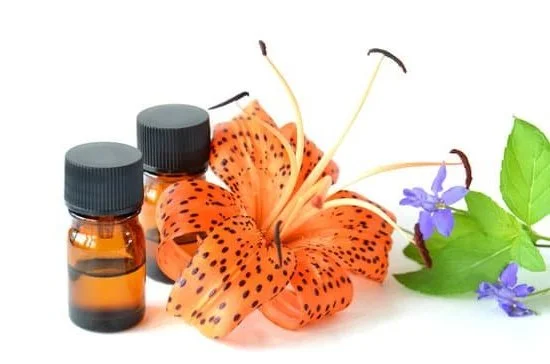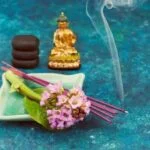In today’s hectic and fast-paced world, many individuals are seeking natural and holistic remedies to promote relaxation, rejuvenation, and overall well-being. One practice that has gained significant popularity is aromatherapy, which utilizes the power of essential oils to enhance both physical and emotional health. By harnessing the therapeutic properties of these concentrated plant extracts, aromatherapy offers a safe and effective way to support the mind and body.
Using essential oils in aromatherapy can have numerous benefits for individuals seeking a natural approach to healing. These oils, extracted from various parts of plants such as flowers, leaves, bark, and roots, contain potent compounds that possess unique aromatic properties. When used correctly, they can stimulate our senses and influence our mood positively.
In this comprehensive guide on how to use essential oils in aromatherapy, we will explore the concept of aromatherapy and its potential healing effects. We will delve into understanding essential oils, selecting the right ones for specific purposes, the proper usage guidelines for beginners, different methods of incorporating essential oils into your daily routine, creating custom blends with DIY recipes, using aromatherapy for common ailments, and even tips for making this practice a sustainable part of your lifestyle.
By the end of this article series, you will be equipped with the knowledge to confidently embark on your journey with essential oil-based aromatherapy. So let’s dive in and discover how these powerful natural remedies can transform your mind and body into a state of tranquility and balance.
Understanding Essential Oils
Essential oils have been used for thousands of years for their therapeutic properties and aromatic benefits. Extracted from various parts of plants, such as leaves, flowers, bark, and roots, essential oils are highly concentrated substances that capture the essence and fragrance of the plant. They are obtained through processes like steam distillation or cold-pressing, which preserve the beneficial compounds within the oil.
There is a wide variety of essential oils available, each with its own unique properties and potential health benefits. Some popular examples include lavender oil for relaxation and sleep support, peppermint oil for focus and mental clarity, and eucalyptus oil for respiratory health. It’s important to note that not all essential oils are created equal – quality matters when it comes to reaping the full benefits.
To ensure safety and effectiveness in aromatherapy, it is crucial to use high-quality, therapeutic-grade essential oils. These oils are sourced from reputable suppliers who adhere to strict standards throughout the extraction process. Avoid purchasing oils that contain synthetic additives or have been adulterated with other substances.
Diluting essential oils properly is also essential to prevent skin irritation or adverse reactions. A carrier oil such as jojoba or coconut oil should be used as a base before applying any undiluted essential oil topically.
Engaging in proper research is vital when incorporating essential oils into your aromatherapy practice. Each oil has its unique chemical composition, aroma profile, and potential therapeutic effects. For example, while citrus oils like lemon or orange can uplift mood and increase energy levels due to their bright scent profiles, they may not have the same calming effects as lavender or chamomile oils. Understanding these differences will help you select the right essential oil for your specific needs.
By familiarizing yourself with various types of essential oils and their properties, you can begin harnessing the power of aromatherapy to enhance well-being, promote relaxation, and support overall health. Whether you’re looking to reduce stress, relieve pain, improve sleep quality, or simply create a tranquil atmosphere in your home, essential oils offer a natural and accessible way to do so. So dive into the world of essential oils and experience the wonders of aromatherapy for yourself.
Selecting the Right Essential Oils for Aromatherapy
When it comes to aromatherapy, choosing the right essential oils is crucial for achieving the desired therapeutic effects. With so many options available, it can be overwhelming to know which essential oils to select for different purposes such as relaxation, focus, or sleep. Here are some tips to help you navigate the world of essential oils and make informed choices for your aromatherapy practices.
Research and Understanding
Before using any essential oil, it is important to research and understand its properties. Each essential oil has unique chemical components that contribute to its specific aroma and potential healing benefits. For example, lavender oil is often used for relaxation and calming effects, while peppermint oil is known for its invigorating and energizing properties.
When selecting essential oils, take into consideration their intended purpose and the specific benefits they offer. There are many resources available online or in books that provide detailed information about the properties and uses of different essential oils. Familiarize yourself with these resources and consult reputable sources to ensure you have accurate information.
Consider Personal Preferences
In addition to understanding the properties of different essential oils, it is important to consider personal preferences when making your selection. Everyone’s olfactory system is unique, meaning certain scents may be more appealing or effective for one person compared to another.
Experimenting with various essential oils allows you to find scents that resonate with you on a personal level. Don’t be afraid to try different oils and take note of how they make you feel mentally, emotionally, and physically. This personal exploration will ultimately guide your selection process in finding the right essential oils that work best for you.
Mixing Combinations
Another aspect of selecting the right essential oils involves creating synergistic blends by mixing different oils together. Blending different essential oils can enhance their individual properties and create a more complex scent profile that suits your needs.
Experimentation is key when it comes to creating your own essential oil blends. Start by combining a few drops of different oils and adjusting the ratios until you achieve the desired aroma and effect. Keep in mind that the ideal blend ratio may vary depending on personal preferences and specific therapeutic goals.
By researching, understanding, considering personal preferences, and experimenting with different blends, you can effectively select the right essential oils for your aromatherapy practices. Whether you are seeking relaxation, focus, or other benefits, choosing the appropriate oils will enhance your overall experience and allow you to harness the true power of aromatherapy.
Safe Usage and Dilution
When incorporating essential oils into your aromatherapy practice, it is crucial to prioritize safety and proper dilution. Essential oils are highly concentrated substances that can cause skin irritation, allergic reactions, or other adverse effects if not used correctly. In this section, we will discuss the importance of diluting essential oils properly and provide a step-by-step guide for using them safely.
First and foremost, it is important to understand that essential oils should never be used undiluted on the skin, with a few exceptions. Most essential oils need to be diluted before applying topically to reduce the risk of irritation or sensitization. Carrier oils are commonly used for dilution purposes. These are natural, neutral oils such as coconut oil, jojoba oil, or almond oil that help to spread out the essential oil on the skin and reduce its potency.
To create a safe and effective blend for topical application, follow these guidelines:
- Choose a suitable carrier oil: Select a carrier oil that suits your skin type and preferences. Popular options include sweet almond oil for normal skin, jojoba oil for oily or acne-prone skin, or coconut oil for dry or sensitive skin.
- Determine the dilution ratio: The dilution ratio refers to the amount of essential oil blended with the carrier oil. For beginner use, it is recommended to start with a low dilution ratio of 1% to 2%, especially when using potentially irritating oils like cinnamon or oregano. As you gain more experience and understanding of your body’s reaction to different essential oils, you can adjust the dilution ratio accordingly.
- Calculate the measurements: To determine how many drops of essential oil you need in your blend based on the desired dilution ratio, simply multiply the total amount of carrier oil (in milliliters) by the percentage (as a decimal) of the dilution ratio. For example, if you are using 30ml of carrier oil and want a 2% dilution, multiply 30ml by 0.02 to find that you need 0.6ml (approximately 12 drops) of essential oil.
- Mix thoroughly: Combine the carrier oil and essential oil drops in a clean glass bottle or container. Close the lid tightly and gently roll or shake the blend to ensure thorough mixing.
Apart from topical application, essential oils can also be used through inhalation or diffusion for aromatherapy purposes. In these cases, there is no requirement for dilution as you are not directly applying the oils to your skin. However, they should still be used with caution, especially in enclosed spaces or around individuals with respiratory conditions.
By following these guidelines for safe usage and proper dilution, beginner aromatherapy enthusiasts can confidently incorporate essential oils into their practice without compromising safety or experiencing adverse effects. Remember to start slowly when introducing new essential oils into your routine, monitor any reactions or sensitivities, and consult with a qualified aromatherapist if needed for personalized guidance.
Different Methods of Using Essential Oils in Aromatherapy
Aromatherapy offers a wide range of methods for using essential oils, allowing individuals to personalize their experience and maximize the benefits of these powerful plant extracts. Here are some popular techniques for incorporating essential oils into aromatherapy:
- Inhalation: Inhalation is one of the simplest and most effective ways to use essential oils. By adding a few drops of oil to a diffuser or inhaling directly from the bottle, you can experience immediate effects on your mood and well-being.
Inhaling essential oils stimulates the olfactory system, which can have a profound impact on emotions, stress levels, and even cognitive function. This method is ideal for promoting relaxation or focus during work or study sessions. - Topical Application: Applying essential oils topically allows for direct absorption into the bloodstream and targeted relief to specific areas of the body. However, it’s important to note that essential oils are highly concentrated and should always be diluted with carrier oils before applying them to the skin.
Common carrier oils include coconut oil, jojoba oil, almond oil, or grapeseed oil. Massage is an excellent way to incorporate topical aromatherapy, as it combines both physical touch and the therapeutic effects of essential oils. - Diffusion: Diffusing essential oils disperses their aromatic molecules into the air, filling a space with delightful scents and therapeutic benefits. This method not only enhances the ambiance but also helps purify the air by eliminating airborne pathogens and allergens.
The most common type of diffuser is an ultrasonic diffuser that uses water to disperse micro-particles of essential oil into the air as a fine mist. There are also nebulizing diffusers that don’t require water but instead work by blowing air across a small tube containing undiluted essential oil. - Bathing: Adding essential oils to your bathwater can transform your bathing experience into a luxurious and therapeutic ritual. When mixed with a carrier oil or an emulsifier like Epsom salt, essential oils can disperse evenly in the water and be absorbed by the skin. This method not only nourishes the body but also promotes relaxation and stress relief. Just remember to dilute the essential oils properly before adding them to your bath to prevent skin irritation.
It’s important to note that different methods of using essential oils in aromatherapy have varying levels of strength and efficacy. Experimenting with different techniques will allow you to find what works best for you and your individual needs. Always follow recommended guidelines for dosage, duration, and safety precautions when using essential oils, and consult a qualified aromatherapist or healthcare professional if you have any concerns or questions.
DIY Aromatherapy Recipes
Aromatherapy is a versatile practice that allows individuals to customize their experience by creating their own essential oil blends. This section will provide you with simple recipes and instructions to help you get started in creating your own personalized blends for various purposes.
When creating your own essential oil blends, it’s important to start with high-quality, therapeutic-grade oils. These oils are derived from plants using methods that preserve their natural properties and therapeutic benefits. It’s also crucial to experiment with different combinations and adjust the ratios of oils to find the perfect blend for your needs.
Below are some DIY aromatherapy recipes for common purposes:
1. Stress Relief Blend:
- 3 drops lavender oil.
- 3 drops bergamot oil.
- 2 drops frankincense oil.
This blend promotes relaxation and helps reduce stress and anxiety. Combine the oils in a diffuser or mix them with a carrier oil for topical application.
2. Mood Enhancement Blend:
- 4 drops orange oil.
- 3 drops ylang ylang oil.
- 2 drops patchouli oil.
This blend can uplift your mood and promote feelings of happiness and positivity. Use it in a diffuser or create a personal inhaler for on-the-go use.
3. Focus and Concentration Blend:
- 4 drops rosemary oil.
- 3 drops peppermint oil.
- 2 drops lemon oil.
This blend can enhance mental clarity, focus, and concentration. Diffuse it while studying or working, or add it to a lotion or carrier oil for topical application.
Remember to always store your homemade blends in dark glass bottles to protect them from sunlight, heat, and air exposure. Additionally, label each bottle with the ingredients used and the purpose of the blend for future reference.
By creating your own essential oil blends, you have the freedom to tailor aromatherapy to your specific needs and preferences. Don’t be afraid to experiment and enjoy the endless possibilities that DIY aromatherapy recipes can offer.
Aromatherapy for Common Ailments
Aromatherapy has long been recognized for its potential healing benefits and can be particularly effective in addressing common ailments. By using essential oils with specific properties, individuals can target their symptoms and promote relief and healing. In this section, we will explore some common ailments and the essential oils that can be helpful in alleviating their symptoms.
- Headaches: Headaches can be caused by various factors, such as stress, tension, or sinus congestion. Peppermint oil is known for its cooling effect and ability to relieve headaches. Applying diluted peppermint oil to the temples and forehead can help alleviate pain and promote relaxation.
- Anxiety: Many individuals experience anxiety or feelings of restlessness. Lavender oil is widely recognized for its calming properties and can help reduce anxiety symptoms. Inhalation of lavender oil through a diffuser or applying it topically on pulse points can provide a sense of tranquility.
- Congestion: Nasal congestion is a common discomfort, especially during cold or allergy season. Eucalyptus oil has powerful decongestant properties that help open up the sinuses and clear respiratory passages. Adding a few drops of eucalyptus oil to a steam inhalation or using it in a diffuser can provide relief.
- Insomnia: Difficulty falling asleep or staying asleep can greatly affect one’s overall well-being. Roman chamomile oil has soothing and sedative effects that promote relaxation and enhance sleep quality. Adding a few drops of chamomile oil to a warm bath before bedtime can be beneficial.
To effectively use essential oils for targeted relief, it is important to properly dilute them before applying them topically or using them in diffusion methods. Additionally, each individual may have unique reactions to different essential oils, so it is essential to conduct patch tests before widespread use.
Through targeted use of essential oils, individuals can harness the healing power of aromatherapy and experience relief from common ailments. It is always advisable to consult with a healthcare professional before embarking on any new treatments or remedies.
Incorporating Aromatherapy into Your Daily Routine
Aromatherapy can be a powerful tool for enhancing your daily routine and promoting overall well-being. By incorporating essential oils into your daily life, you can create a sustainable practice that helps support a tranquil mind and body. Here are some tips to help you seamlessly integrate aromatherapy into your everyday routine:
Start with Small Steps
If you’re new to aromatherapy, it’s best to start small and gradually incorporate it into your routine. Begin by selecting one or two essential oils that resonate with you or address specific needs. Experiment with different methods of use, such as diffusing oils in the morning or applying them topically before bed. As you become more comfortable, you can expand your collection of essential oils and explore different recipes and blends.
Create Rituals
One way to make aromatherapy a sustainable practice is to create rituals around its use. Choose specific times during the day when you can devote a few moments to enjoying the benefits of essential oils. For example, you might diffuse an uplifting scent while preparing for work or school in the morning, or take a relaxing bath with lavender oil before bed. By consciously setting aside time for aromatherapy, you integrate it into your routine more easily.
Practice Mindfulness
Aromatherapy is not just about the physical effects of essential oils; it’s also an opportunity to cultivate mindfulness and presence in your daily life. When using essential oils, take a moment to pause and fully immerse yourself in the experience. Close your eyes, take a deep breath, and allow yourself to be present with the aroma and its impact on your senses. This simple act of mindfulness can enhance the therapeutic effects of aromatherapy.
Customize Your Blends
While pre-made blends are widely available, creating your own custom blends can be a rewarding part of your aromatherapy practice. Experiment with different essential oil combinations to find what works best for you. Consider blending oils with complementary properties or ones that align with the specific needs of each day. Adjust the ratios of essential oils to create unique scents that resonate with your preferences and enhance your overall experience.
Prioritize Self-Care
Incorporating aromatherapy into your daily routine is an act of self-care, so it’s important to prioritize your well-being throughout the process. Take the time to listen to your body and intuitively select essential oils that meet your needs on any given day.
Explore different methods of application, such as massage or inhalation, and tailor them to suit your preferences and comfort level. By placing self-care at the center of your aromatherapy practice, you can reap maximum benefits.
Remember, incorporating aromatherapy into your daily routine should be a joyful and sustainable endeavor. Pay attention to what resonates with you personally and modify these tips accordingly. Through consistent practice and exploration, you can harness the power of essential oils for a tranquil mind and body that supports your overall well-being.
Conclusion
In conclusion, essential oils have proven to be a powerful tool in the practice of aromatherapy, offering numerous benefits for the mind and body. Throughout this article, we have explored the different aspects of using essential oils in aromatherapy, from understanding what they are and how they are extracted, to selecting and safely using them for maximum effectiveness.
One of the key takeaways from this discussion is the importance of using high-quality, therapeutic-grade essential oils. By choosing reputable brands and doing proper research on the properties of different oils, individuals can ensure that they are harnessing the true power of these natural remedies. Additionally, it is crucial to dilute essential oils properly to avoid skin irritation and other adverse reactions.
We have also examined various methods of incorporating essential oils into aromatherapy, including inhalation, topical application, and diffusion. Each method has its own benefits and drawbacks, so it is important to experiment with different techniques to find what works best for you. Furthermore, we have provided simple recipes for creating custom blends tailored to specific needs.
By incorporating aromatherapy into your daily routine with consistency and mindfulness, you can experience the transformative effects that essential oils offer. Whether you are seeking stress relief or better sleep, there is an oil or combination of oils that can help. So go ahead and explore the world of essential oils – embrace their healing powers and enjoy a tranquil mind and body through the practice of aromatherapy.
Frequently Asked Questions
How do you dilute essential oils for aromatherapy?
To dilute essential oils for aromatherapy, it is important to use a suitable carrier oil such as jojoba oil, almond oil, or coconut oil. The general guideline is to mix 1-3 drops of essential oil with 1 teaspoon (5 mL) of carrier oil.
The resulting mixture can then be applied topically on the skin for massage or used in a diffuser for inhalation purposes. Dilution is crucial to prevent skin irritation and ensure safe usage of essential oils.
What is the most effective way to use essential oils?
The most effective way to use essential oils largely depends on the desired outcome and individual preferences. Inhalation is often considered one of the most efficient methods as it allows the aromatic compounds of the oils to directly interact with our olfactory system, influencing mood and emotions.
This can be achieved by using a diffuser, inhaling directly from the bottle, or adding a few drops onto a tissue or cloth. Topical application through massage or applying diluted essential oils directly onto specific areas of concern is also popular and effective for physical benefits.
What are the three ways to use essential oils?
There are three primary ways to use essential oils: through inhalation, topical application, and ingestion (although ingestion should only be done under the guidance of a trained professional). Inhalation involves breathing in the aroma of essential oils using diffusers, steam inhalation techniques, or even simply smelling them from the bottle.
Topical application involves applying diluted essential oils directly onto the skin for absorption and localized therapeutic effects such as massage or targeted treatment for specific issues like muscle pain. Lastly, while many people are aware that some essential oils can be ingested such as in culinary recipes or capsules prepared by professionals skilled in this area, it’s important to note that not all essential oils are safe for internal consumption due to their potency and potential adverse effects if used improperly.

Are you looking for a natural way to improve your health and wellbeing?
If so, aromatherapy may be the answer for you.





